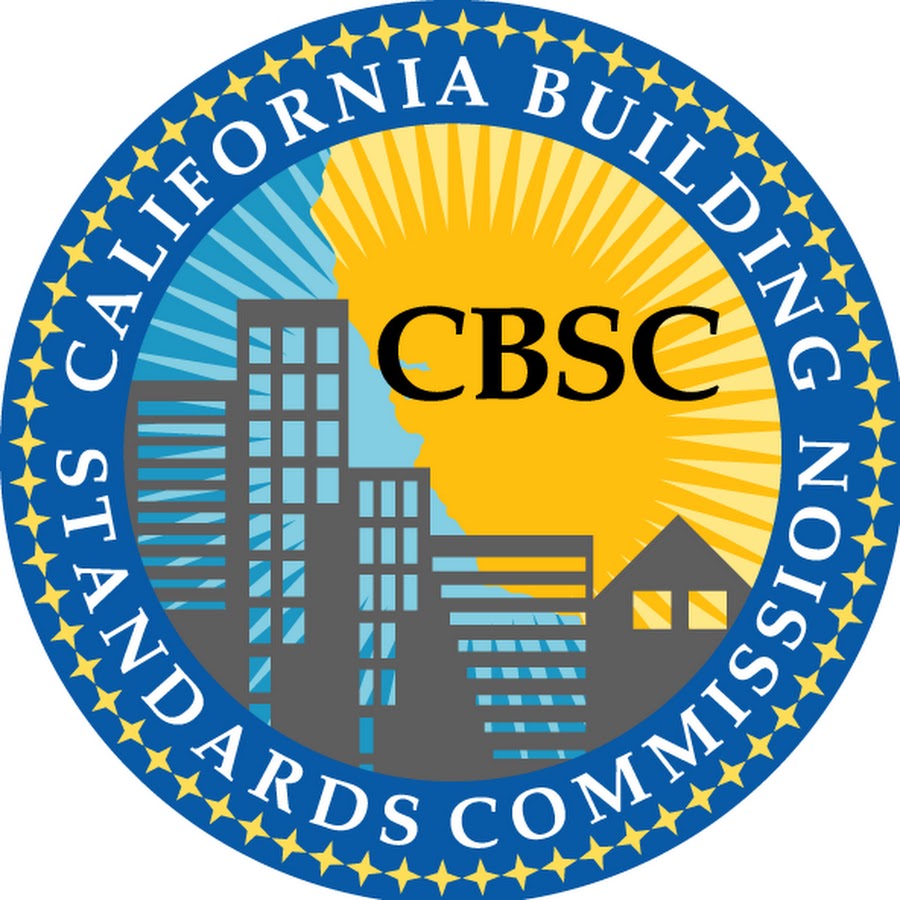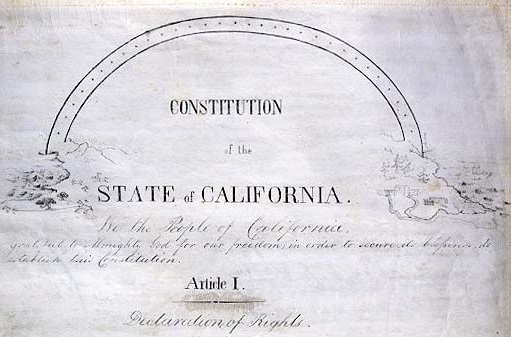
"California's Housing Future 2040." (Photo: hcd.ca.gov)
Ringside: Only Unity Can Challenge Environmentalism, Inc.
California has only 5.0 percent of its land housing 94.2 percent of its population
By Edward Ring, May 16, 2024 7:19 am
 The California Environmental Quality Act was passed by the state legislature in 1971. At that time, it was the first legislation of its kind in the nation, if not the world. Its original intent was to “inform government decision makers and the public about the potential environmental effects of proposed activities and to prevent significant, avoidable environmental damage.”
The California Environmental Quality Act was passed by the state legislature in 1971. At that time, it was the first legislation of its kind in the nation, if not the world. Its original intent was to “inform government decision makers and the public about the potential environmental effects of proposed activities and to prevent significant, avoidable environmental damage.”
Over the past half-century, however, CEQA has acquired layers of legislative updates and precedent setting court rulings, warping it into a beast that denies clarity to developers and derails projects. When projects do make it through the CEQA gauntlet, the price of passage adds punitive costs in time and money. Knowing this will happen deters countless investors and developers from even trying to complete a project in the state.
On May 8 the Little Hoover Commission, an independent state oversight agency, submitted to the governor its recommendations for how CEQA might be revised. Because the Little Hoover Commission is taken seriously by state policymakers, the recommendations are more incremental than might be advisable if policymakers took seriously their obligation to make California’s economy work for everyone, but in most respects what they’re recommending are steps in the right direction.
Good ideas from the commission included a provision to limit delaying tactics, since delaying a project often is enough to kill a project, as well as stricter standards for who has so-called standing to file a CEQA lawsuit. Anyone who has gone through a CEQA process appreciates the value of these two reforms. The commission also recommended the legislature add clarity to CEQA language to take some of the burden of interpretation away from the courts and litigants, and they recommended the state “establish clear parameters for significance thresholds and for analysis and mitigation of impacts.” Easier said than done, fraught with potential to just make matters worse, but we have to try. So far, so good.
Where the commission made a grave error was in carving out an exemption for “infill housing.” If CEQA must exist, there shouldn’t be any exemptions. Every special interest needs to jump through the same hoops. That might actually stimulate unity across California’s productive economic sectors as to what CEQA should and shouldn’t do. As it was, in the four lengthy public hearings held last spring, the only industry that showed up in force were the home builders. For the most part, these hearings were dominated by the usual suspects, professional and semi-professional activists representing environmentalist and social justice causes.
One may also wonder why “infill,” whereby every spare scrap of empty land “within existing development patterns” has to be turned into high density housing, is the optimal use of that land or a desirable housing strategy. The imposition of growth boundaries around California’s cities is perhaps the single biggest cause of a housing shortage and high prices, and its justification contradicts obvious facts. California is the most urbanized state in America, with only 5.0 percent of its land housing 94.2 percent of its population.
To share a fact that can’t be repeated often enough, you could move 10 million people into homes on quarter-acre lots, four per household, with an equal amount of land allocated for roads, parks, schools, and retail, commercial and industrial zoning, and you would only increase California’s urban footprint from 7,779 square miles to 9,702 square miles. That is, in this vast state which encompasses 155,779 square miles, you could move 10 million people into so-called sprawling suburbs and you would only increase the urban footprint of the state from 5.0 percent to 6.2 percent. The claim that we need to protect open space from suburban sprawl, heard incessantly from environmentalists, is completely unfounded.
But this is the restrictive mentality that dominates Sacramento’s politicians and the state bureaucracy. Adherence requires imposing scarcity on everything that might make California a more affordable, productive and welcoming state. To enforce scarcity, CEQA is just one of the bigger tools among many. Whether it’s the California Air Resources Board, CalGEM, Cal EPA, the Dept. of Water Resources, the Dept. of Fish and Wildlife, the Coastal Commission, or the Public Utilities Commission, their intent is unambiguous and implacable. Scarcity in all things: energy, water, transportation, housing.
CEQA reform is past-due. But incremental changes that will just accelerate Sacramento’s plan to move millions of people into low-rise apartments built on demolished single family homes is not a pleasant future, irrespective of the pretty renderings presented at planning department meetings by subsidy-guzzling developers armed with calculations of how much carbon they’ll save by cramming people into smaller and smaller spaces.
One proposal to overhaul CEQA was filed by Stephen Hilton last year and cleared for signature gathering. Among other things, it would have restricted CEQA lawsuits to county district attorneys and capped impact fees. That could have been settled law by January 2024 if voters had a chance to vote on it in November, but the deadline for signature gathering just expired on 5/13. Prospective donors knew what support for this initiative would have meant: nuclear war against Environmentalism, Inc.
But these non-incremental proposals are what is needed to save California for working families. Why do we have CEQA at all, when there are so many other state and federal laws designed to protect the environment? More generally, what is it going to take to mount a serious challenge to the environmental movement in California that has captured our institutions to impose a misanthropic and extreme version of environmentalism on the population?
What is missing today is unity between industrial interests and wealthy individuals who recognize what is happening in California and are prepared to fight, dollar for dollar, for as many decades as it takes, against a political machine that has forgotten that people come first. To do that, they have to stop playing defense, and come together to identify common threats and combine resources to fight for solutions that work for everyone.
- Ringside: Will the Delta Pumps Operate at Capacity this Winter? - December 18, 2025
- Ringside: Will Advocates for More Water Supply Projects Find Unity? - December 11, 2025
- Ringside: EVs and California’s Future Demand for Electricity - December 4, 2025





https://sfist.com/2024/02/16/scott-wiener-introducing-bill-to-halt-environmental-reviews-in-downtown-sf-for-10-years/
Recently while visiting my republican State Senator, I visited Scott Weiner’s office to offer my support for this legislation which would exempt downtown San Francisco from CEQA. To be fair this is the only legislation that Mr. Weiner has proposed that I have supported. I also asked him to consider adding an amendment to the legislation that would allow a governor an opportunity to exempt other areas of the state from these onerous guidelines that are generally only used as lawfare against out of favor projects. This would be a great tool for a conservative governor.
It’s a waste of time to visit an leftist ideologue and a radicalized member of the alphabet mafia like creepy Democrat Senator Scott Wiener and ask for reasonable legislation? Maybe Hal caught Wiener shirtless wearing his leather Folsom Street Fair attire showing off his boney concave chest hoping to ensnare and exploit vulnerable youth?
(https://twitter.com/scott_wiener/status/759872134365663232)
Wiener exudes demonic energy and he’s in need of an exorcist?
It was intimidating walking in. The friend that I was with tried to pull me back from going in and stayed in the hall. The office door off the hallway is covered with posters of the causes that he supports that I definitely don’t support. I recall a bunch of young hipsters laughing and carrying on when I first walked in. They all caught a look of me (a man in my 60’s wearing a sport coat and a dress shirt) and they all left the lobby. When I pulled a bumper sticker out of the bag that I purchased in the capitol gift shop that says “I miss President Regan” I was hoping that the young hipster that was behind the counter was going to recoil and have a meltdown. He didn’t and remained professional. I explained why I was there and explained that even though we are miles apart on politics and beliefs that I support the 10-year repeal of CEQA. If this repeal were to happen statewide the economic engine of California would be flipped on and this state would begin to prosper again. Standing up for what is right can be intimidating but if a person doesn’t standup when the opportunity is presented you miss out on opportunities to help bring about real change. As far as seeing Mr. Weiner in whatever garb he wears that’s not for me. Changing this state back to a time when commonsense and Godly values ruled that is for me.
Hopefully you got whatever you were wearing DE-LOUSED, Hal, because I can only imagine what kind of VERMIN inhabits Weiner’s offices (orifices?)
#YUCK